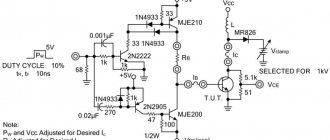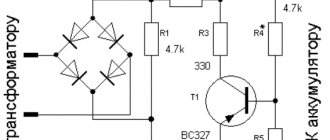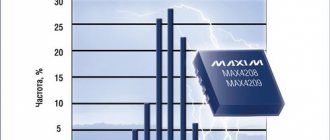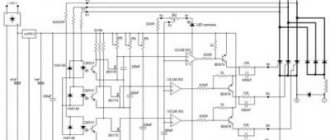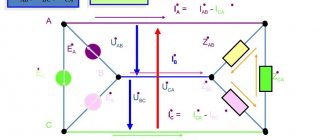What is an amplifier and what types of amplifiers are there?
An amplifier is a device that increases energy.
This is possible thanks to the use of energy from an auxiliary source. The input signal is the template for the amplifier. The energy is adjusted according to the input signal. Electronic are amplifiers of electrical signals that have an adjustment function using elements on semiconductor or electrovacuum devices.
It must be said that amplifiers can be classified according to some and quite a large number of characteristics.
Types of amplifiers are distinguished by the method of operation and the performance of their intended functions. You can also classify them according to the quality of the work itself and the specific type of functions provided by the manufacturers.
Classification of amplifiers by type of signals:
- harmonic signal amplifier;
- pulse signal amplifier.
Classification of amplifiers according to the function of amplification of constant and variable signals:
- DC amplifier;
- AC amplifier.
Classification of amplifiers by frequency range is:
- low frequency amplifiers;
- high frequency amplifiers.
Classification of amplifiers according to the type of amplitude-frequency characteristic in operation (frequency band of the operating signal) is:
- broadband amplifiers;
- narrowband amplifiers.
The classification of amplifiers by electrical indicator (that is, the purpose of the amplifier as such) is:
- resonant or selective amplifiers;
- aperiodic amplifiers.
Classification of amplifiers by electrical indicator is:
- voltage amplifiers;
- current amplifiers;
- power amplifiers.
What is the difference between amplifier classes
To fully understand the classification of amplifiers, it is recommended to study each category in detail, considering the operating features of the devices, as well as the specifics of application in certain cases.
Class A
Category A amplifiers are considered common and affordable for use. They are simple in design, characterized by linearity, as well as average distortion rates. These features help achieve the desired sound quality when organizing acoustics.
More often, one type of transistor is used in the design. It is connected so that current flows to the speakers even when the main input signal is not flowing.
A device can be classified as group A if the zero current during no-load is identical to the load current during operation.
Category A amplifiers operate in the ultra-linear frequency domain, which means the bias needs to be set correctly. This is the only way to ensure that the required sound flow is achieved.
class A amplifier
Since the output equipment is turned off, it conducts current and causes power loss. Heat is generated and efficiency decreases to 40%. So the devices seem impractical when organizing high-power installations.
In order for the equipment to operate correctly, the power supply is given the necessary dimensions, and the input signal is filtered before being sent to the amplifier. Otherwise, the likelihood of an extraneous hum during operation increases.
Class B
To increase efficiency and reduce heating of the structure, it was decided to develop group B amplifiers. The devices are equipped with two additional transistors, each of which amplifies only half of the signal. The specificity of the design determines the implementation of 50% of the cycle in a positive or negative period.
There will be no bias current here, because the quiescent current of the device is zero. This led to the fact that the power of the equipment is low. The efficiency is higher than that of devices of category A.
The equipment is twice as efficient as devices of group A. But there is also a minus, which is represented by distortions during operation.
Distortion is caused by the presence of a certain corridor in the transistors. Part of the signal in this corridor will be modified, which makes adjustments to the output signal.
Class AB
By combining the properties of devices of categories A and B, engineers managed to obtain a functional device that combines the positive qualities of these devices. The design is more similar to group B amplifiers. The main difference is that the transistors simultaneously conduct the signal in close proximity to the intersection points of the oscillograms. The bias voltage here will be 5-10% of the corresponding quiescent current indicators.
The described approach helps eliminate the problems of high signal distortion characteristic of category B devices.
AB equipment appears to be a compromise between minimal distortion and efficiency. The conversion efficiency is 50%.
Class C
Class C units are efficient but non-linear. The input current is zero and remains at this level for half the time of the signal processing cycle. The transistor is switched to standby at this moment.
This approach guarantees an efficiency of about 80%, however, changes are made to the signal during use of the device. Because of this, amplifiers are rarely used in acoustics. They are much more common in various generators, radio devices, and other signal converters.
Class D
Class D amplifiers are usually classified as nonlinear pulse devices, which are also called PWM amplifiers.
Integrated circuits are characterized by high dissipation even with ideal implementation. The approach provides some advantages to devices due to low heat generation, lightness and compact size. The devices are cheaper, and the time required to work independently is longer.
For proper functioning of the devices, a high-voltage board of 10,000 watts is required.
Other classes
It is customary to separately consider other classes of amplifiers used to solve specific problems:
- Class F. Progressive models, the efficiency of which reaches 90%.
- Class G. Improved highly linear variation of the AB device. They automatically switch along power lines, assessing the necessary parameters of the input signal. This approach reduces energy consumption and also reduces energy losses due to heating.
- Class I: Positioned in a push-pull configuration just before switching on helps the mechanism switch quickly even when the required voltage is not present at the input connector.
- Class S. Nonlinear type amplifiers, based on the operating principle, are more reminiscent of class D devices. Using the equipment, the input analog signal is converted into a digital one with the required gain. The output power increases and the efficiency reaches 100%.
- Class T. Digital amplifiers that include special chips for processing and increasing the frequencies of incoming signals. Specially designed multi-channel 3D audio components guarantee the effectiveness of the equipment in creating a full-fledged home theater or music center.
What is an amplifier for?
When asked what an amplifier is for, most consumers give the answer: to make the music sound louder, that’s why it’s an amplifier. This answer is incorrect. Because an amplifier is needed not just to increase the sound volume, but for high-quality sound.
Providing high-quality sound across the entire sound range perceived by the human ear is the answer to the question of what an amplifier is needed for. You cannot get a high-quality music experience by simply increasing the volume. Increasing the volume means listening fatigue and no pleasure.
The most important and powerful enemy of high-quality sound is distortion and interference.
The amplifier receives a far from ideal signal, and the purpose of this device is precisely to convey a high-quality signal to the listener.
It must be taken into account that if the sound pressure is approximately the same, that is, it has the same volume, and if the sound comes through an amplifier, then the distortion on the speakers is much less than if you listened to music directly through a radio.
Depending on the use, power amplifiers are needed for home use and for professional use.
As independent devices, household power amplifiers are not represented in a very wide range. Manufacturing companies more often offer to the market stereo systems, home theaters and other equipment with a built-in power amplifier. Therefore, it often makes no sense to purchase a power amplifier as a separate device.
But there are cases when purchasing such a device is justified.
For example, household power amplifiers for home systems that are designed to amplify sound. They are needed to slightly amplify the sound and to minimize distortion. After all, you need to understand that in home use there is no need for high volume, you need good quality without distortion. Household power amplifiers are produced with a large power reserve in order to be able to enhance the low frequencies of the audio range. If an overload occurs, this will lead to a significant distortion of the perceived sound and even failure of the acoustics. It is recommended to use household amplifiers at 25-30 percent of the power that the manufacturing company indicates in the technical data sheet.
Amplifier classification
Classification of sound amplifiers by class involves division into two groups. The first group includes devices A, B, AB and C. They have similar conductivity indicators. The transistor is installed in a position between on and off.
TOP best amplifiers by sound quality
The second group includes devices marked D, E, F, G, S, H and T. These devices are also called switching devices. To work here, the principle of pulse modulation is used, as well as modern digital techniques for the continuous passage of the signal between the off and on positions. The result is the desired output signal in the saturation range.
Below is a table comparing the characteristics of amplifiers of the first group, which includes models A, B, AB and C. They are more often taken for consideration, while the amplifiers of the second group represent different variations with average performance for use in specific conditions.
| Characteristics | A | IN | AB | WITH |
| Theoretical efficiency | 50% | 78% | Depends on the selected mode | 100% |
| Real efficiency | 15-30% | 50-60% | 40-50% | 80-100% |
| Nonlinear distortion | small | high | average | high |
| Power consumption | constant | depends on output parameters | depends on output parameters | depends on output parameters |
| Thermal stability | low | high | average | high |
Transformer voltage amplifiers
In transformer amplifiers, the primary winding of the transformer is connected to the collector circuit of the transistor (Fig. 8). Due to the low resistance of this winding to direct current (units or several tens of Ohms) in rest mode, i.e. in the absence of an alternating input signal, a small voltage is created on it, and the collector voltage is almost equal to the voltage - GK. The alternating input voltage creates an alternating component of the collector current and magnetic flux in the transformer core. Under the influence of magnetic flux, alternating emfs with the frequency of the signal are induced in the windings of the transformer. From the secondary winding, alternating voltage is supplied to the amplifier load. By using a step-up transformer in such an amplifier, you can get greater gain than in a resistor amplifier. Due to the small voltage drop on the primary winding, a transformer amplifier has a higher efficiency compared to a resistor amplifier. In addition, the use of a transformer allows in many cases to obtain a good match between the load resistance and the output (internal) resistance of the amplifier. The disadvantages of a transformer amplifier are its large dimensions and weight compared to a resistor amplifier and a decrease in gain at low frequencies (less than 50 Hz).
